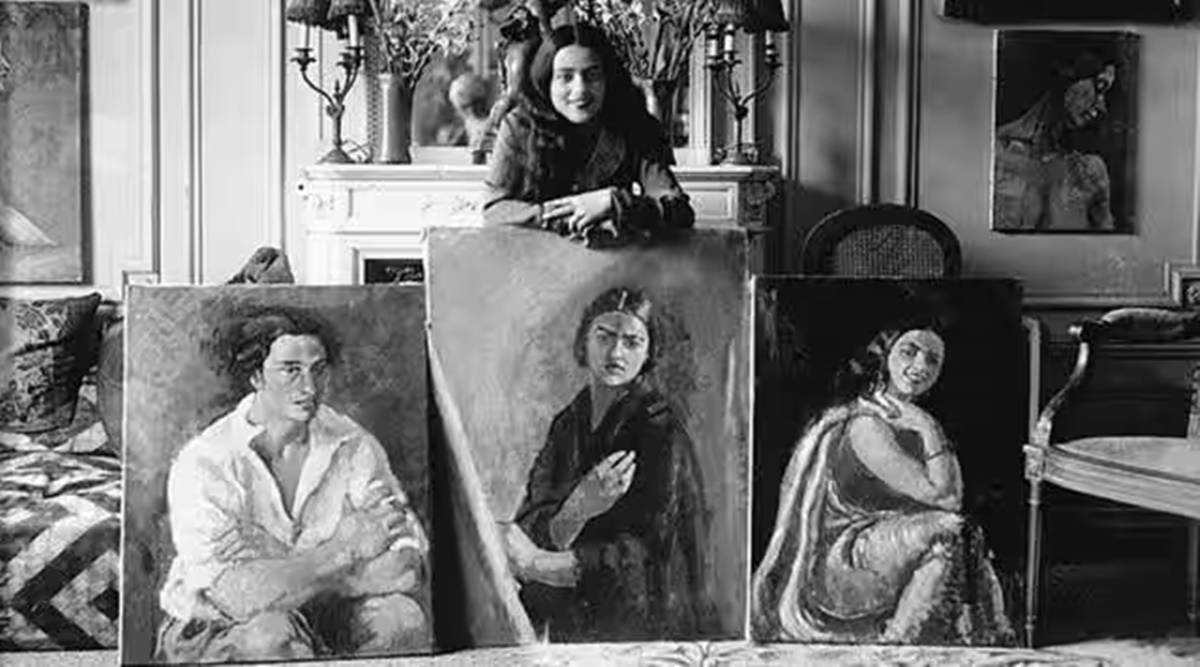A domestic scene features women huddled together, engaged in everyday tasks as they converse. When Amrita Sher-Gil’s 1937 canvas The Story Teller became the most expensive Indian artwork to be auctioned at a staggering Rs 61.8 crore on September 16, it marked a milestone not just for the artist but also for Indian art.
One of the greatest avant-garde artists of the early 20th century, this earthy work came at a critical juncture in Sher-Gil’s career. Its nuanced layers and its ability to capture the contentment and solitude of her subjects also marks a coming together of her own pursuit of the constant binaries in her life and work — the conflicting worlds and ethos of the East and the West. To that end, The Story Teller is honest and empathetic, much like the artist herself.
Born in Budapest to Hungarian-Jewish opera singer Marie Antoinette Gottesmann and Umrao Singh Sher-Gil Majithia, a Sikh aristocrat and scholar, Sher-Gil was defiant even as a child, refusing to adhere to formal drawing instructions and arguing with school authorities in Florence after she drew a nude at 11. Only 16 when she enrolled at the École des Beaux-Arts in Paris, her artistic vocabulary was enriched by early exposure to the impressionism of Paul Cézanne and Paul Gauguin. Several of her early portraits and nudes are considered among the best in contemporary Europe. Though the bohemian Parisian life appealed to her, she longed to return to India and rediscover her roots. In 1936, just a year before she painted The Story Teller, Sher-Gil set out on a journey to understand India through travel. What she encountered became life lessons that ignited an urge to draw upon India’s rural landscapes and bustling bazaars, its traditions spanning centuries — Mughal and Pahari schools of painting, the cave art of Ajanta and the temple complexes in South India. Art critic and collector Karl Khandalavala described three of her works from this period — Bride’s Toilet, Brahmacharis and South Indian Villagers Going to Market — as Sher-Gil’s south Indian trilogy. About The Story Teller, he noted, “the cows, the women folk, and the setting, though all far removed in technique from those of Basohli miniature, are pregnant with its lyricism and vivid colour.”
Within the gravitas of Indian art of the time, Sher-Gil was a loner who shared little in common with her contemporaries. If the prevalent Bengal School of Art emphasised indigenous and nationalist identity, the influence of colonial academic realism was more prominent in the work of her fellow modernists. Sher-Gil was bolder, in her palette and in the range of her subjects, that included self-portraits, nude studies and the India she aspired to capture.
Most Read
Despite the critical acclaim and recognition she received, she was also occasionally belittled by her male contemporaries for her privileged and provocative attitude. Her nonconformity also reflected in the choices she made in her personal life — including a series of relationships with men and women, and a troubled marriage with her cousin Victor Egan. Her protagonists were often women of agency, sensuous and sensitive, but also reflecting a sense of desolation.
Sher-Gil died in 1941 from a botched abortion, though Egan announced dysentery as the cause. She was only 28 at the time. In a career spanning a little more than a decade, Sher-Gil is known to have made less than 200 paintings, but she had managed to chart an alternate modernism for a soon-to-be independent India. Her version of Mother India was a vagrant with her son on her lap and her daughter next to her.
In a way, the record sale is a celebration of Sher-Gil’s conviction to not be silenced, to be counted at par with her male counterparts. She would have cringed at this being termed as a win solely for women artists. During her time in Paris, on being awarded a prize as a “woman artist”, she had reportedly written to her parents: “It rather smacks of concession due to the feebler sex.”
vandana.kalra@expressindia.com
If you want to register your marriage in thane visit : https://courtmarriageregistration.co.in/court-marriage-registration-in-thane
Source link






